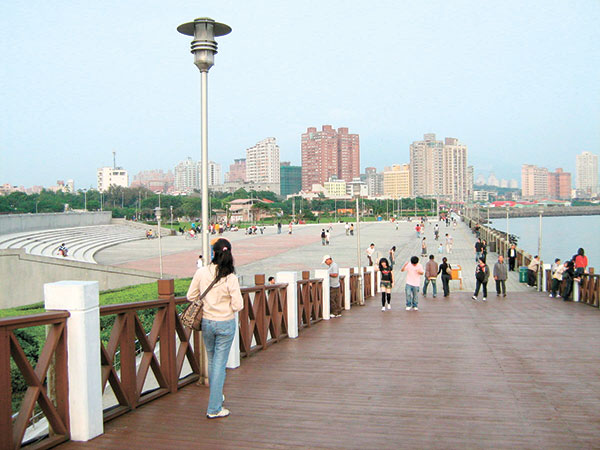Travel Fund Starter Pack
Five foolproof tips to save for that trip
Photos by N.S. Villaflor
NO other time in the country’s history has traveling been more affordable to Filipinos than now. Not too long ago, one-way airfare to Manila cost more than the current cost of round-trip tickets to Singapore. Yet for many of those who hold stable jobs with decent salaries, traveling remains elusive, especially when it comes to budgeting.
The culprit? Most likely, it’s lifestyle inflation. As incomes grow, wants increase as well. This is on top of needs that become more costly, too.
The most prudent of individuals will probably address their needs first and be willing to spend more on rent for bigger space, or for a newly acquired housing unit on top of the compact sedan, all of which demand a sizeable cut from income. Then there’s food and clothing needs: the more income increases, tastes apparently become more refined, which means more expense.
So where does that leave travel, which essentially is regarded as a want? How does one save up for travel when every centavo seems allotted to pay for one’s needs? Freon Ollival offers five tips to help you save without needing to resort to a drastic lifestyle change:
1. Do the math. Start by re-computing your monthly expenses. After allotting funds for necessary payments such as amortization, rent, utilities, and transpo expenses, you’re left with food, clothing and entertainment. But chances are, you’re spending too much on Instagrammable items, including food and clothes. This is where you can get extra savings.
A good rule of thumb would be to cut by half on non-essential food expenses. For instance, if you eat out at hip joints every week, do so every other week instead. This would leave you with P600 to P800 in savings every month (if you spend P300 to P400 per meal). Cutting down on beverages would help as well: if you have a daily dose of frappuccino, can you imagine how much you’d save if you indulge only every other day and opt from some home brew or the ubiquitous 3 in 1? Easily another P300 to P500. That gives you P1,000 to P1,300 a month, or P12,000 to P15,600 a year. That amount alone can shoulder a nice budget three-day trip in Kuala Lumpur.
And yes, do you really need to buy branded clothes every other week? How about repurposing all that stuff in your closet? You’d be surprised how much you’d save from exercising restraint when it comes to shopping for non-essentials.
2. Decide. So many awesome destinations beckon, and picking one can be a lot tougher than it sounds. Given your projected budget, decide whether you wish to go abroad or head somewhere in the country you’ve never been to. Because of cheap airfares, some destinations in Southeast Asia may cost slightly higher compared to, say, a trip to Boracay or Coron. Outside of the Asean region, though, the travel costs may skyrocket, add to that visa fees and other costs. (In case you didn’t know, Filipinos don’t need a visa for Southeast Asian trips, as well as for Hong Kong.)
If you’re going abroad, don’t forget to save up for the mandatory travel tax at the local airports, a whopping P1,620 per head, on top of the terminal fee, which integrated in the flight tickets upon booking. Right now, the cheapest destination abroad direct from Cebu is Kuala Lumpur in Malaysia, which has even cheaper connecting routes to neighboring destinations like Singapore, Thailand, Vietnam and Cambodia.
3. Plan. Six months to a year is a good time frame for planning as you keep an eye for promo fares and have enough time to save. The best “All-in” or “Piso Fare” sales usually happen during red-letter days, such as Labor Day and Independence Day. Flight schedules, though, tend to be more expensive during holidays as demand is higher.
Check out as many budget airlines as possible — Tigerair, Cebu Pacific and AirAsia, as well as Jetstar for connecting flights. Be sure to book the one-way on-sale flight and worry about the return trip later, as return flights tend to be more expensive than outbound flights. Tip: Tigerair and AirAsia regularly offer cheap flights one to two months from departure date. Sign up for points programs for future redemption.
As for affordable accommodation, Airbnb and online booking sites such as Agoda are reliable, plus the reviews are helpful. Direct online bookings also give good rates. Take note, though, of peak seasons: off-peak rates can go as low as half, even a third, of peak rates. Backpacker districts tend to be cheaper, accessible and generally safe for travelers.
4. Research. For many travel destinations in Southeast Asia, great food can be found along the streets or at holes-in-the-wall. Food can cause a serious dent on your travel finances, so avoid overhyped, expensive food places. In Bangkok or Vietnam, noodles or rice topping dishes for under P70 are as good as any here.
Do-it-yourself touring has its advantages but joining other travelers to get group discounts and split the bill not only provides savings but offers a chance to meet new people, who can give you useful tips as well. Factor in transportation in your itinerary, and book your accommodations near transport hubs or stations. Use mass transport for bigger savings.
5. Commit. As long as it’s not a life and death issue, stick to your travel plans, which means you need to commit to saving for the trip. Also, commit to resisting the urge to splurge on non-essentials. Commit to traveling light, so you won’t pay for extra luggage weight. Commit to paying off your total monthly credit card dues so you can save more by not paying for monthly interest.
Commit to opening a non-ATM bank account specifically for your travel fund, since unlike the piggy bank, you won’t have easy access to your savings when you feel like spending on a whim. And when you’re done, commit to travel some more, at least once a year to some place you’ve never been to.





